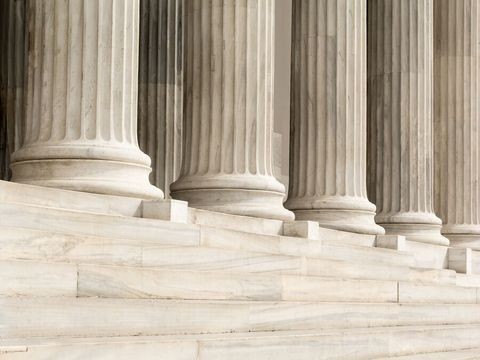Environmental Groups Challenge EPA's Guidelines Intended to Help Farmers Determine Whether They Need Air Permits; Farm Groups Argue for Delay in Permitting for Diesel Engines and CAFOs
Client Alert | 2 min read | 05.16.03
On May 13 and 14, 2003, environmental groups filed suit in the U.S. Court of Appeals for the Ninth Circuit challenging the EPA's approach to permitting agricultural sources of air pollution in California. The challenges were filed by the Sierra Club, Medical Advocates for Health Air, and others. They focus on guidance which EPA has provided to farmers in connection with rules the Agency issued in 2002. The rules establish a schedule for permitting major agricultural sources of air pollution. They require, among other things, that farms which use diesel engines to power irrigation pumps apply for operating permits under Title V of the federal Clean Air Act if they are major sources of air pollution. In this first round of Title V permitting for agricultural operations, major sources using diesel engine were required to apply for permits by May 14, 2003. That is to be followed by another round of permitting. All other major sources of agricultural pollution, including concentrated animal feeding operations, must submit permit applications by August 1, 2003.
In an "extreme" ozone nonattainment area, such as Los Angeles, sources that emit, or have the potential to emit, at least 10 tons of nitrogen oxides or volatile organic compounds are "major sources." In the San Joaquin Valley, which is currently classified as a "severe' ozone nonattainment area, sources that emit at least 25 tons per year are considered "major."
Environmental groups object to the directions which EPA gave to farmers in the permit application form. EPA directed farmers to estimate their actual diesel emissions by determining the number of hours the equipment is used and the amount of fuel used. By calculating an emissions average for one full year, farmers will determine whether they are required to obtain a Title V permit.
Plaintiffs argue that the Clean Air Act requires that sources determine their "potential to emit," not an estimate their annual average emissions. "Potential to emit" is defined in EPA regulations as the "maximum capacity of a stationary source to emit a pollutant under its physical and operational design." Typically, one would calculate potential to emit based on a 24-hour-per-day, 365-day-per-year operation. However, any physical or operational limitation on the capacity of a source to emit a pollutant, including pollution control equipment and hours of operation, is to be treated as part of its design if the limitation or the effect it would have on emissions is federally enforceable. Plaintiffs allege that, during the summer, when air pollution is at its worst, irrigation pumps often run 24-hours a day.
At virtually the same time that these suits were filed, on May 13, the California Farm Bureau asked the Ninth Circuit for a delay in the May 14 deadline for these operating permits and requested that the August 1, 2003 deadline by which concentrated animal feeding operations must apply for Title V operating permits also be delayed.
Insights
Client Alert | 5 min read | 12.12.25
Eleventh Circuit Hears Argument on False Claims Act Qui Tam Constitutionality
On the morning of December 12, 2025, the Eleventh Circuit heard argument in United States ex rel. Zafirov v. Florida Medical Associates, LLC, et al., No. 24-13581 (11th Cir. 2025). This case concerns the constitutionality of the False Claims Act (FCA) qui tam provisions and a groundbreaking September 2024 opinion in which the United States District Court for the Middle District of Florida held that the FCA’s qui tam provisions were unconstitutional under Article II. See United States ex rel. Zafirov v. Fla. Med. Assocs., LLC, 751 F. Supp. 3d 1293 (M.D. Fla. 2024). That decision, penned by District Judge Kathryn Kimball Mizelle, was the first success story for a legal theory that has been gaining steam ever since Justices Thomas, Barrett, and Kavanaugh indicated they would be willing to consider arguments about the constitutionality of the qui tam provisions in U.S. ex rel. Polansky v. Exec. Health Res., 599 U.S. 419 (2023). In her opinion, Judge Mizelle held (1) qui tam relators are officers of the U.S. who must be appointed under the Appointments Clause; and (2) historical practice treating qui tam and similar relators as less than “officers” for constitutional purposes was not enough to save the qui tam provisions from the fundamental Article II infirmity the court identified. That ruling was appealed and, after full briefing, including by the government and a bevy of amici, the litigants stepped up to the plate this morning for oral argument.
Client Alert | 8 min read | 12.11.25
Director Squires Revamps the Workings of the U.S. Patent Office
Client Alert | 8 min read | 12.10.25
Creativity You Can Use: CJEU Clarifies Copyright for Applied Art
Client Alert | 4 min read | 12.10.25
Federal Court Strikes Down Interior Order Suspending Wind Energy Development


